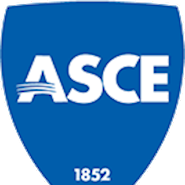ASCE has installed Edward W. Stafford, P.E., PTOE, F.ASCE, as its new chief operating officer, and he’s hit the ground running.
Stafford replaces Marty Fertal, who retired in April, and inherits the role for an organization in the midst of implementing its new strategic plan. Stafford is uniquely positioned for the job. He served as Region 7 director from 2019 through 2022, meaning that he was on the ASCE Board of Direction in October of 2022 that approved this new strategic plan.
“I am excited to continue my work with our Society in this new role and looking forward to being able to focus more of my time and energy on ASCE,” said Stafford, who will relocate from Colorado to live closer to the ASCE headquarters in Reston, Virginia. His ASCE history goes back to serving as the webmaster for his student chapter at the Colorado School of Mines.
“Over the coming months and years, I am excited to support ASCE in implementing our strategic plan and preparing for the future, while being involved in the many great programs and initiatives we offer and that will create our future successes.”
Stafford’s new job means he must vacate the role as ASCE assistant treasurer. At its May meeting, the Board of Direction voted to approve Mario Ricozzi, P.E., ENV SP, F.ASCE, as the new assistant treasurer.
Stafford has more than 25 years of experience working in local government in the Denver area, providing communities with expertise in land development, traffic engineering, regional stormwater management, capital improvement program management, emergency management, and public works. Most recently, he held the position of senior manager of engineering for the City of Boulder (Colorado) Planning and Development Services Department. He earned the ASCE William H. Wisely Award in 2019.
“We are thrilled to have Edward on board as the new COO,” said ASCE President Marsia Geldert-Murphey, P.E., F.ASCE. “Edward brings a well-rounded perspective. He has worked in academia and public works, in addition to his work as a dedicated volunteer and member of ASCE.
“He has experience working with many of the constituencies within our membership –younger members, student members, and practitioners. As a result, Edward really doesn’t have a learning curve to get up to speed. He is hitting the ground running, and we look forward to the innovative contributions he will bring to our Society.”
Other highlights from the May board meeting
The Board of Direction is considering consolidating member grades after the Board Strategic Advisory Council presented its recommendations for an outreach campaign at its latest meeting. Aimed at the strategic goals of improving business efficiency and delivering on member value, while also embracing the broader infrastructure community, the plan merges affiliate, associate, and member grades. Concurrently, the board is recommending changes to officer eligibility to require potential ASCE presidential candidates to hold a P.E. license or be a member in the fellow grade.
“This could be one step toward accomplishing the mission of being a more welcoming organization,” Geldert-Murphey said. “It would additionally reduce our costs while making it easier for prospective members to join. It also could make the organization more welcoming to members from diverse technical backgrounds in this time where our workforce needs are increasing and enrollment in engineering is decreasing.”
Because the proposed consolidation would require changes to the Society constitution and bylaws, the change will need to be approved by two separate votes of the Board of Direction before going to the full membership for a vote in the general election.
The board also received the first update from BSAC’s Reimagine ASCE Subcommittee, formed to explore how ASCE’s organizational structure can be best aligned with the strategic plan and a sustainable and resilient future for ASCE and the profession. The subcommittee will provide updates as work progresses toward recommendations at the board’s January meeting. The Committee on Education also gave the board a progress report on its ongoing exploration of civil engineering education’s future in the context of today’s workforce challenges.
“Everything about this excites me,” Geldert-Murphey said. “As a 172-year-old professional organization – the oldest engineering society in the United States – we stand on a foundation with a rich legacy.
“We need to honor that legacy while staying relevant in today’s rapidly evolving world. We must continually look forward to our profession’s needs and always strengthen our member impact.”



